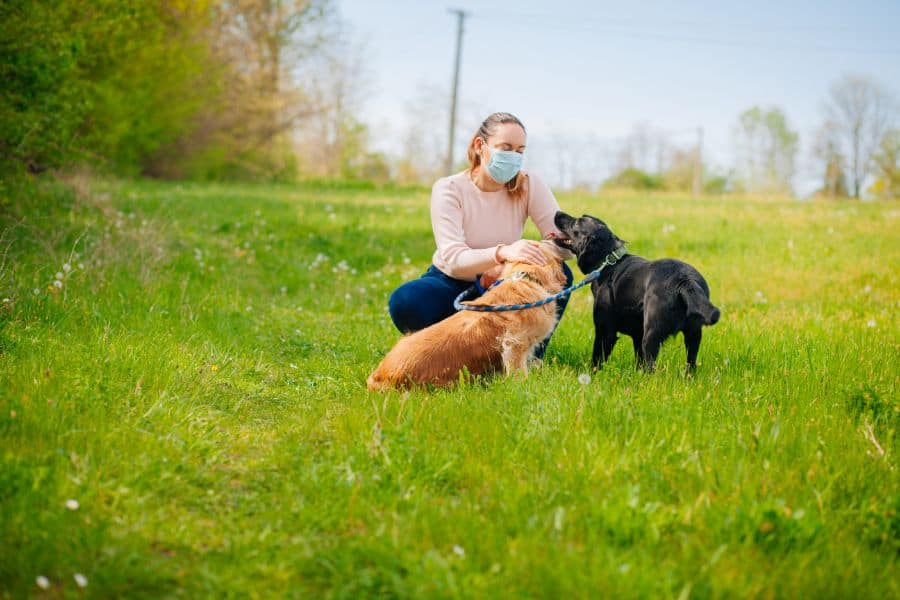Deciphering Adult Dog and Puppy Interactions

When an adult dog and a puppy are introduced, the results can be devastatingly cute.
Much like human children, puppies are often unencumbered by normal social cues and norms. This endearing quality can cause problems, however, especially among dogs who do not have a lot of patience for puppy behavior .
When allowing adult dog and puppy interactions to occur, Rocklin Ranch Veterinary Hospital wants you to know what is normal, what’s not, and when it’s time for you to intervene.
The Normal Order of Things
Puppies are playful, and they can be a whole lot of fun to watch. Normal puppy body language may include play gestures such as:
- Dropping into a play bow
- “Smiling”
- Play biting
- Very exaggerated growling or barking
- Taking turns chasing
- Bouncy movements
During normal play, both dogs should have a relaxed body. Often tails are wagging and they both will be alert. For the most part, dogs will tend to regulate their own play. A growl or a yelp may occur as they learn what one another’s limits are. These are important things for a puppy to learn.
Typically during mutual play, both dogs will keep returning for more, even if one seems to flop over and submit for a moment.
When Dog and Puppy Interactions Go Too Far
Allowing your puppy to play and socialize is an important part of good puppy care and proper socialization. Sometimes you may need to stop playtime, though.
There are two main reasons that you may need to intervene in dog and puppy interactions. The first is that the older dog is not tolerating the puppy well and is unable to tactfully end the interaction. The second is that the puppy has crossed a line between play and aggression.
Knowing when the older dog has had enough–Most adult dogs will start to show signs that they are unhappy before things escalate to aggression. The older dog may try to hide or get away from their over-enthusiastic playmate. They may display displacement behaviors such as yawning, licking the lips, or looking away. Even the best-behaved puppy needs a time out to calm down at times. You can help by redirecting play to something like a game of fetch, an interactive toy, or even a puppy playdate with healthy, vaccinated dogs your pup’s own age.
Identifying aggression in puppies–While true aggression in puppies is not commonly seen, it does happen. It is extremely important to identify this behavior so that you can intervene early. It is important to stop “play” behavior when your puppy is displaying aggressive body language such as raised hackles, a stiff posture, or lunging. Ears will tend to be pinned back, mouth closed. Vocalizations may include long, low warning growls. It is also important to note if aggression takes place towards certain places, items, food, or people. It is best to deal with territorial aggression early.
If you are noticing signs of aggression in your puppy, or if you are having trouble navigating interactions between dogs, please call us for help. Getting your puppy off on the right paw in terms of socialization is important, and we want to help ensure things go well.

